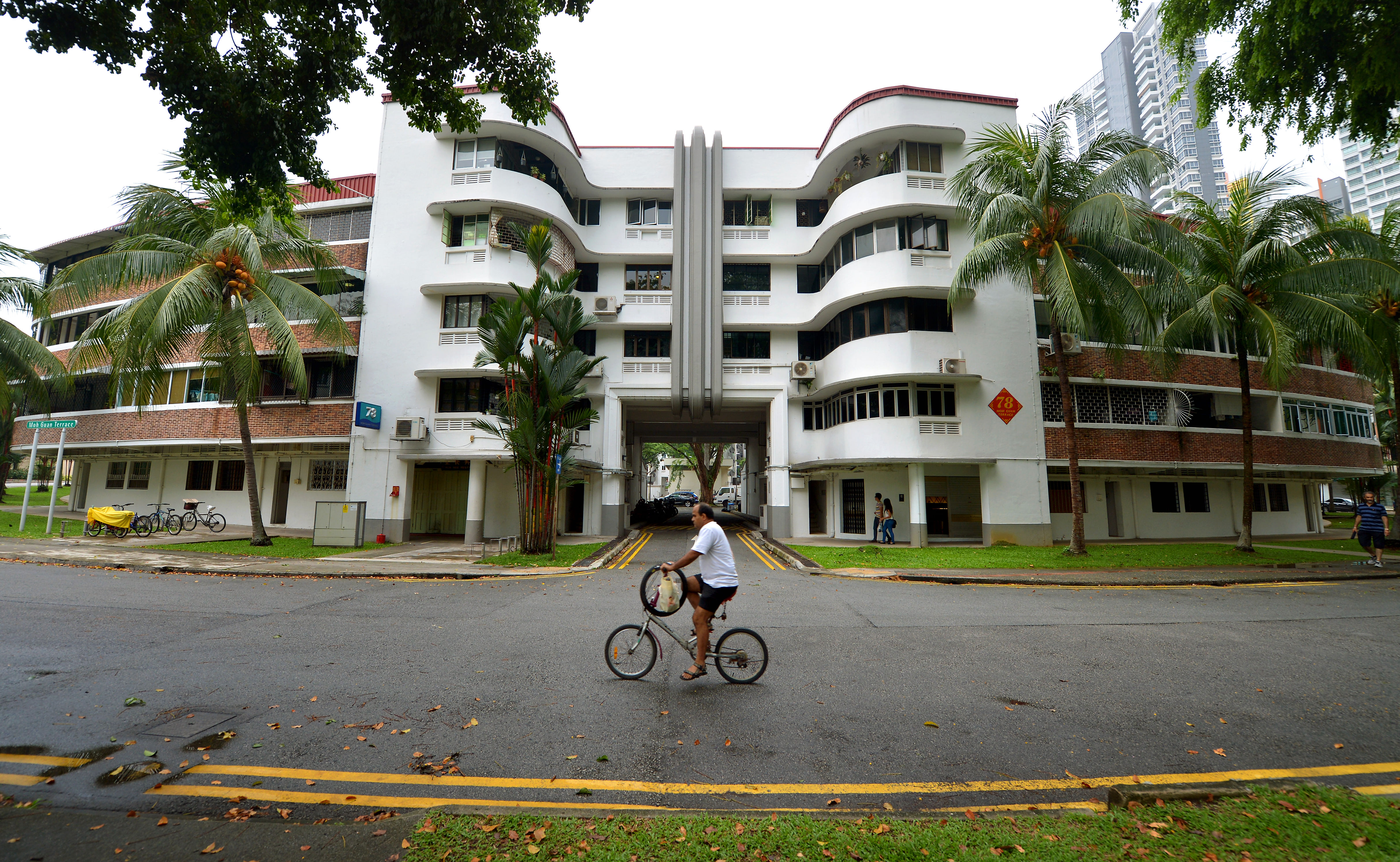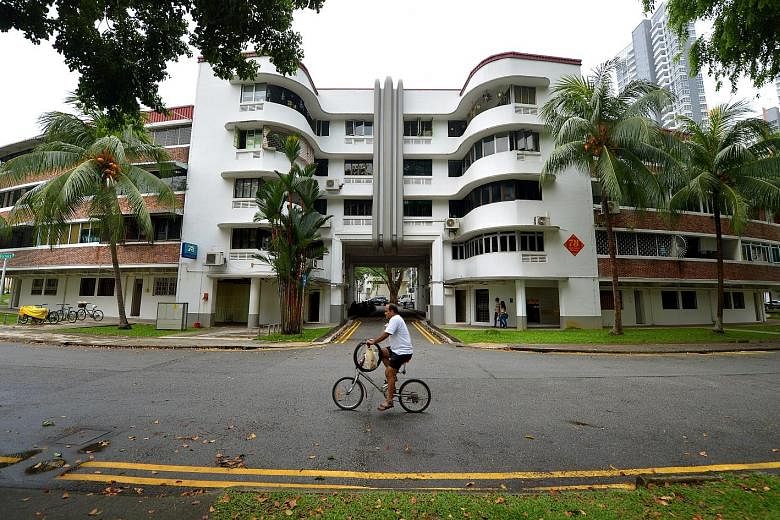Having grown up in the good ol' 1980s, I feel pangs of nostalgia now and then, gazing in wonderment at how much skylines and neighbourhoods here have changed: Old and once-familiar landmarks making way for gleaming skyscrapers or some other modern-day infrastructure.
At these times, as if on cue, rosy memories of youthful bliss would bubble up.
One of the best ones was of the sun-drenched five foot way outside my grandfather's barber shop, in a quaint Jalan Besar shophouse, where my cousins and I played any number of childhood games in the sultry afternoon heat.
Skip 30 years ahead to 2013. It was with this sense of nostalgia - a hope of recreating that warm and fuzzy feeling - that I took up the search for an HDB resale flat to call my own. "How nice to live in a little charming estate steeped in heritage," I thought.
Predictably, I found myself looking at the old walk-ups in Tiong Bahru and chanced upon a three-room flat on the ground floor of a block in Lim Liak Street.

The unit was then 40 years into its 99-year lease. It was old, a fact that was immediately apparent once I stepped into the 800 sq ft-plus space. The walls could use a fresh coat of paint and the bathroom felt slightly depressing. It was in its "original condition", the property agent had said.
While the state of the unit did not put me off, the asking price and the extensive renovation the flat needed did. I was also concerned about the ticking 99-year-leasehold clock. It had 59 years of lease left at that point. Surely, the value of the unit would depreciate as it gets older? Who would buy it if I tried to sell it 15 years down the track?
"There's the hope of Sers (the Selective En bloc Redevelopment Scheme) in the future," I mused.
In that scenario, HDB would acquire the flat - which would be demolished - at the prevailing market value, and offer a replacement flat in a new block at a subsidised rate, with a fresh 99-year lease.
Compelling. But Sers is never a given, and it is risky to bet on it.
In the end, pragmatism ruled the day and I went for a much newer, 11-year-old flat in a highrise block nearby and, in so doing, bought myself more time.
The HDB said that Sers is offered on a "highly selective basis" to residents of public housing blocks located in sites with "high redevelopment potential, subject to the availability of suitable replacement sites and the Government's financial resources".
Only 4 per cent of HDB flats have been identified for Sers since the scheme was launched in 1995.
So what happens when the lease runs out? "The flats will be returned to HDB, who will in turn have to surrender the land to the state," National Development Minister Lawrence Wong said in a recent blog post, reminding home buyers not to assume that all old HDB flats will automatically be selected for Sers.
As the flat ages, its value would decline accordingly. Theoretically, the value of an HDB flat at the end of the lease is zero. A sobering thought, given that the flat is for most people their largest store of asset value.
The thought that HDB flats would lose their value significantly is perhaps not front and centre of the collective consciousness, owing to several reasons.
For one thing, prices of older flats appear to have been fairly resilient thus far. A case in point: A friend sold her flat in Moh Guan Terrace in Tiong Bahru last year for $630,000. She had bought the unit - with a 99-year lease commencing in 1973 - for $550,000 in 2011. She said all the prospective buyers who viewed the flat were young couples who did not seem overly concerned about the diminishing lease.
Second, many Singaporeans do not think the Government will let the 99-year-lease time bomb explode. They believe the Government will intervene to help support the value of their flats - as it has done for years - by improving them through estate-upgrading programmes or redeveloping them under Sers or some other new policy down the road.
Third, there is no precedent. No public housing block has hit that 99-year mark yet. Today, there are about one million flats in Singapore, with just 7 per cent, or about 70,000, more than 40 years into their leases, according to HDB figures. Depreciation aside, once the lease declines below 60 years, there are constraints on using Central Provident Fund (CPF) savings to finance the property, noted consultancy OrangeTee.
The owner would not be able to use his CPF Ordinary Account savings to finance the unit if the flat has a remaining lease of less than 30 years.
For flats with a remaining lease of less than 60 but at least 30 years, the sum of the owner's age and the flat's lease balance must be at least 80 years for the owner to be able to use CPF savings for the property. However, the amount of CPF savings that can be used is lower for such flats.
Owners of very old flats would similarly face difficulties in re-selling their unit later on, as the pool of buyers starts to shrink due to CPF and loan restrictions.
The HDB housing loan will not be extended to flats with less than 20 years' lease, while banks typically do not provide financing for units with under 30 years of lease balance. These restrictions mean the old flats can be sold only to buyers who are "cash-rich", noted International Property Advisor key executive officer Ku Swee Yong.
To this end, paying top dollar for a flat of 40-plus years today, and hoping to make a hefty profit from its resale 20 years later or for it to be picked for Sers is not realistic.
Of course, the lease is but one factor that will affect a property's value. Others include market supply and demand dynamics, as well as the location's attributes.
Ultimately, the decision to buy a home is a very personal one, depending on individual needs, circumstances and finances. The purchase is, for most of us, a big long-term financial commitment, and due diligence ought to be done.


